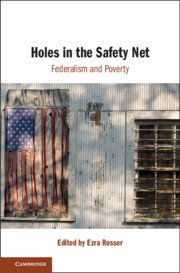New Article: Shayak Sarkar & Josh Rosenthal, Exclusionary Taxation, Harv. Civ. Rights – Civ. Lib. L. Rev. (2018), Forthcoming. Abstract below:
Property tax assessments appear to be technocratic calculations. But they may be calculated to discriminate, even unintentionally. California’s constitutional limitations on property taxes, as first enacted by Proposition 13 in 1978, remain the poster child for the so-called “property tax revolt” of the late twentieth century. Such laws privilege preexisting homeowners by capping assessments at historic levels far below contemporary value. As property prices rise, beneficiary homeowners may even bequeath this taxpayer windfall to their descendants and immortalize these underassessments. Newer, increasingly diverse residents end up paying higher taxes because the law treats them with less regard than their more pedigreed neighbors. These tax policies are rationalized as providing “stability” to the existing residents. The aggrieved have found cold comfort in the Constitution, with the Supreme Court upholding the core of California’s system in the canonical Nordlinger v. Hahn.
In this Article, we argue that even if such exclusionary tax policies do not violate the Constitution, they likely violate another facet of federal law: the Fair Housing Act’s disparate impact liability. Our contributions are threefold. First, as a procedural matter, we identify recent caselaw that offers a means for such legal challenges to enter the courthouse door. Although state and federal courts in the twentieth century erected barriers to judicial review of property tax policies, we argue that the landscape has changed.
Second, using California as a case study, we illuminate the contours of a Fair Housing Act challenge to discriminatory, acquisition-value assessments. We do so with reference to prior and ongoing tax litigation in diverse municipalities, namely Long Island and metropolitan Detroit. We thus explore the federal prohibition of what we call “exclusionary taxation.”
Third and most significantly, we train our sights on the justifications for exclusionary taxes. We map, and begin to reconcile, the tensions between, on one hand, recognized local government interests in “stability,” and, on the other, property-based inclusion of a demographically-evolving America. We argue that, while property tax assessments can be used to protect existing homeowners, they must be employed through narrowly tailored methods, such as circuit breakers or deferred payment, rather than overly broad acquisition-value assessment systems. While the latter might pass constitutional muster, they fail to comply with the Fair Housing Act’s vision of property-based pluralism.





